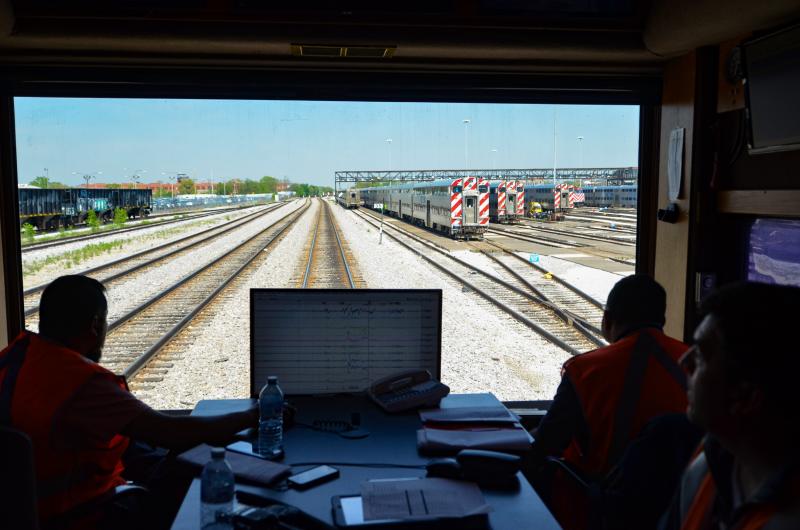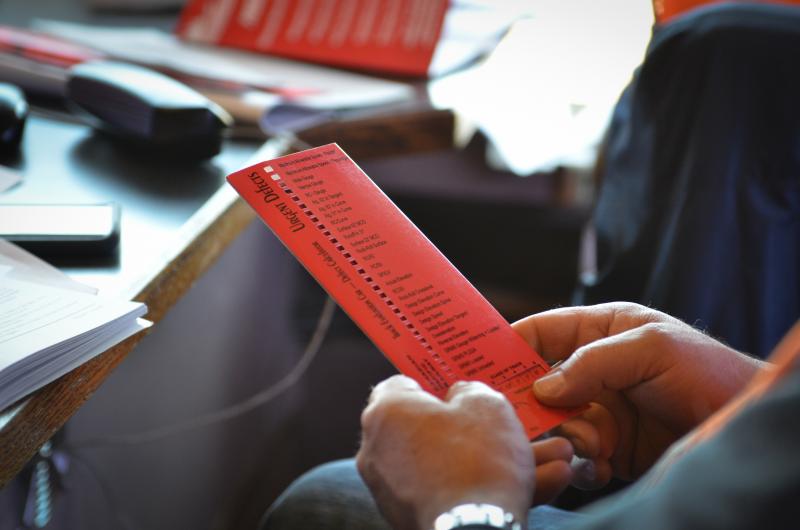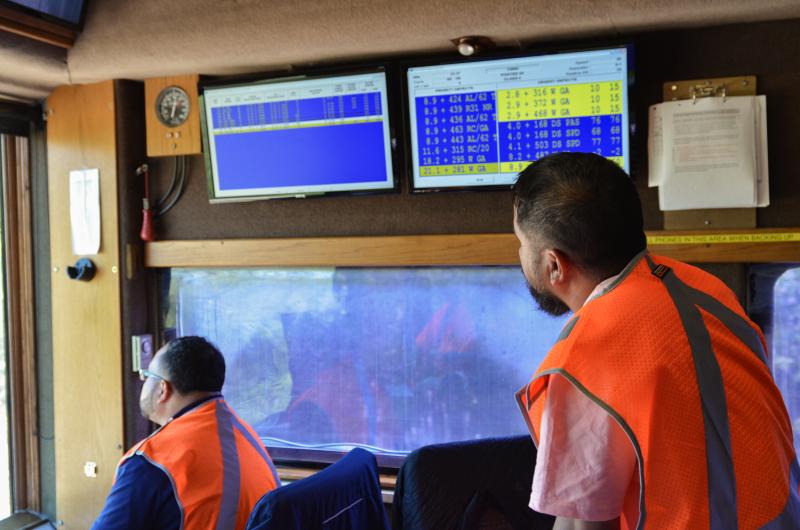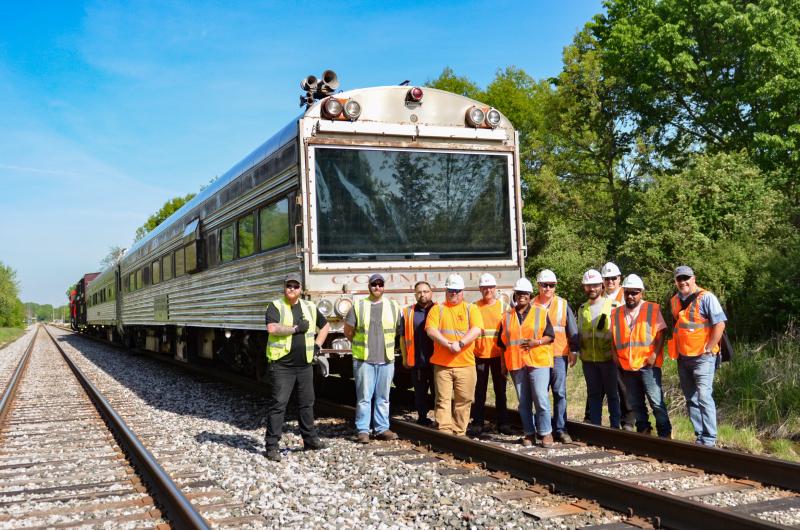The computerized voice states the word so calmly it doesn’t sound like there’s cause for concern.
“Defect. Defect.”
Despite the monotone delivery, the announcement sparks a commotion. Track inspectors on board the specialized equipment that uttered the phrase spring towards computer screens to determine what issue on Metra’s tracks prompted the announcement and quickly implement a solution.
Metra uses many tools to ensure a smooth and safe ride for its customers, but few compare in capability and presence to the track evaluation car, also known as the geometry car, which uses lasers and cameras to take precise measurements of the tracks to identify segments that need immediate fixes and to plan for larger capital improvement projects.
 The geometry car itself is a mix between a motorhome – picture carpeted walls, wooden cabinets and upholstered seats – and a railcar that resembles a school bus from the outside. A table with seats for four is stationed front and center before a large picture window that offers an unparalleled view of the tracks. The two front seats are reserved. The first is for a conductor, who pilots the train by communicating with the engineer in the locomotive at the rear of the train, as well as dispatchers. The second seat belongs to a track inspector, who makes note of the track features in order to better help identify areas where the track needs improvement.
The geometry car itself is a mix between a motorhome – picture carpeted walls, wooden cabinets and upholstered seats – and a railcar that resembles a school bus from the outside. A table with seats for four is stationed front and center before a large picture window that offers an unparalleled view of the tracks. The two front seats are reserved. The first is for a conductor, who pilots the train by communicating with the engineer in the locomotive at the rear of the train, as well as dispatchers. The second seat belongs to a track inspector, who makes note of the track features in order to better help identify areas where the track needs improvement.
“Switch, tunnel, milepost, diamond, bridge, road crossing,” a computerized voice announces at track inspector Omar Solis’s command on a recent trip along the Milwaukee District North Line.
As the train ambles down the tracks, lasers and cameras measure the track surface, alignment, elevation, cross level and gauge under the load of a 115-ton railcar. Five computer monitors, one sitting on the table and four others mounted to the walls, display the track conditions as the train proceeds.
Making its way over a junction, the train dips slightly and everyone on board holds tight to their coffee.
“Defect. Defect,” the automated voice says based on the readings. A red line appears over the measurements displayed on two of the wall-mounted screens.
Eyes dart to the screens and Track Inspector Frank Kmiec asks if the reading was valid. It is, according to one of the Canadian Pacific employees assisting in the process. (Metra rents Canadian Pacific’s geometry car twice a year to inspect every mile of Metra-owned tracks. Union Pacific and BNSF and the region’s other freight railroads also use geometry cars and other heavy-duty track inspection equipment several times a year in addition to daily and weekly inspections.)
There are two types of defects that could be detected: priority and urgent. Urgent defects must be corrected as soon as possible and require speed restrictions be put in place until the defect has been inspected by workers on the ground and fixed.
Priority defects, meanwhile, must be inspected and monitored to ensure they do not become urgent defects.


Immediately Kmiec calls dispatchers to implement a slow order to reduce speed over that section of track and track employees to go out and make repairs. In most cases, these repairs can be made within hours.
Once the trip is complete, CP employees create a report for Metra employees to analyze and use for long-range planning.
“Say I run the geometry car and the data says I’m within ½ an inch of my wear limit – I have to make plans so I can buy rail and replace it once it gets to that point,” Manager of Special Track Services and Welding Jose J. Jauregui said.
Although Metra’s track inspectors regularly use other equipment such as hi-rail trucks – a pickup truck that can run on the rails – with similar technology several times a week to check for changing track conditions, the geometry car is the only piece of equipment that can duplicate the same lateral force to the rails that would be applied by a regular freight or commuter train.
“We’re looking for the way the train reacts,” Kmiec said. “On the hi-rail you’d have to be going pretty fast, and sometimes you can see it off in the distance if the rail dips a little bit, but that takes time to learn. The geometry car is the proper equipment to gather all the information.”
